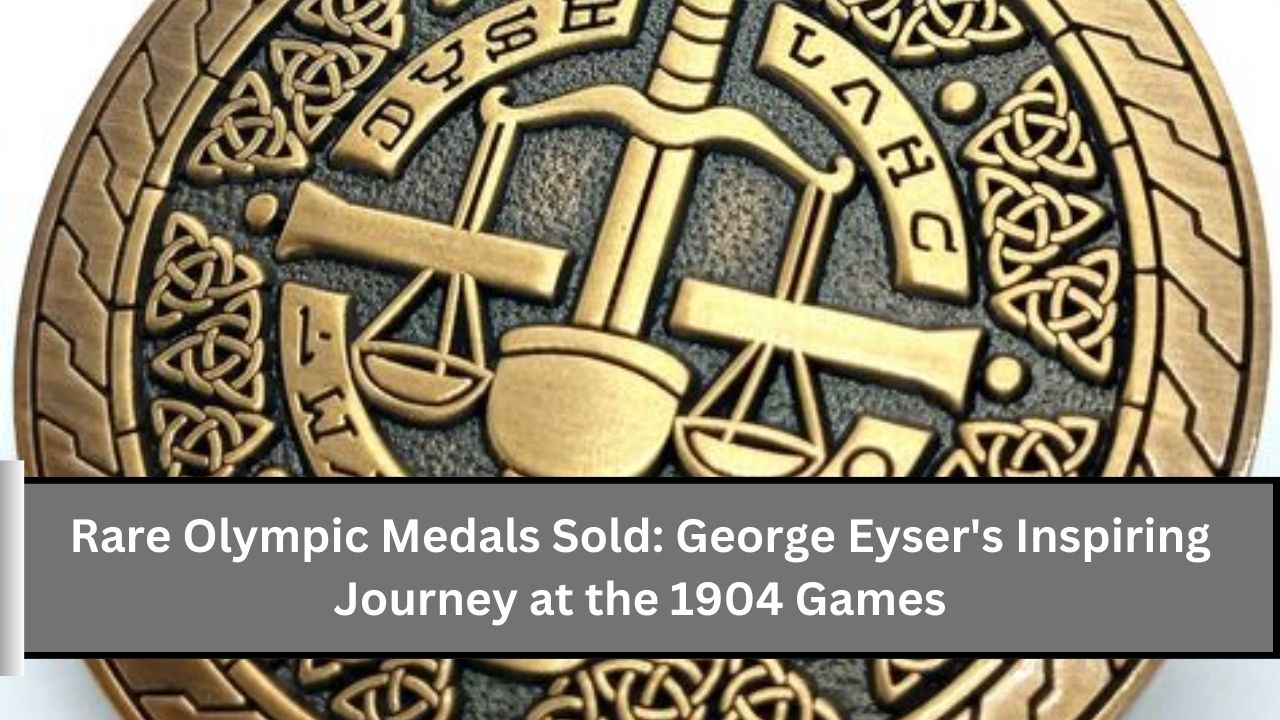In July, a special auction showcased Olympic medals that hold significant historical value. Among these was a gold medal awarded to George Eyser at the 1904 St. Louis Olympics. Eyser’s story is remarkable, highlighting his determination to succeed despite facing physical challenges. This article explores the details of Eyser’s achievements, the auction results, and other notable medals sold during this event.
| Medal | Event | Winner | Year | Final Price | Notes |
|---|---|---|---|---|---|
| Gold Medal | Rope Climbing | George Eyser | 1904 | $80,163 | Eyser won six medals in one day despite competing with a prosthetic leg. |
| Winner’s Medal | Fencing | Judit Ágoston-Mendelényi | 1964 | $52,363 | Includes original Japanese keepsakes, enhancing its historical significance. |
| Gold Winner’s Medal | Taekwondo | Ángel Matos | 2000 | $51,620 | This medal carries a controversial history tied to its awarding. |
| Gold Winner’s Medal | 4 x 400-meter Relay | Team USA | 2012 | $58,855 | Represents teamwork and modern Olympic excellence, linking London’s history with its Olympic legacy. |
The Auction Event
The auction, conducted by RR Auction in Boston, featured several Olympic medals from different games. These medals not only represent athletic excellence but also carry unique stories and histories. The event took place on July 18, 2024, and generated considerable interest among collectors and sports enthusiasts alike.
George Eyser: A Remarkable Athlete
Early Life
George Eyser was born to German immigrants in 1884. After moving to the United States, he faced a life-changing challenge when an accident resulted in the loss of his left leg. Undeterred, Eyser adapted to his new reality by using a wooden prosthetic leg. He joined the Concordia Turnverein gymnastics club in St. Louis, where he trained rigorously for the upcoming Olympics.
1904 St. Louis Olympics
The 1904 Olympics were unique as they were held alongside the World’s Fair, leading to a complex schedule of events. The gymnastics competitions took place in two parts: the International Turners’ Championship in July and the Olympic Gymnastics Championships in October. Although Eyser’s performance in July was disappointing, he made an incredible comeback in October.
Eyser’s Achievements
In one extraordinary day, Eyser won three gold medals in the parallel bars, long-horse vault, and rope climbing events. He also earned two silver medals in the combined event (which included a pommel horse) and a bronze medal in the horizontal bar. Eyser’s accomplishments are even more remarkable considering the limited competition from international athletes and the basic design of prosthetic legs at that time.
“George Eyser’s story is one of the most inspiring tales in Olympic history,” said Bobby Livingston, executive vice president at RR Auction. “This gold medal is not just a symbol of his athletic prowess but a testament to his incredible determination and resilience.”
Sale of Eyser’s Medal
Eyser’s gold medal for rope climbing sold for $80,163 during the auction, reflecting its rarity and the powerful story it represents. His achievements inspired countless athletes with disabilities, highlighting the spirit of resilience and perseverance.
Highlights from the Auction
The auction featured several other notable medals, each with its unique history and significance:
- Tokyo 1964 Summer Olympics Winner’s Medal: Awarded to Hungarian fencer Judit Ágoston-Mendelényi, this medal came with original Japanese keepsakes, adding cultural depth to its historical significance. It sold for $52,363.
- Sydney 2000 Summer Olympics Gold Winner’s Medal: This medal was controversially awarded to Cuban taekwondo athlete Ángel Matos. It symbolizes not just victory but the dramatic narratives within Olympic sports. The final price was $51,620.
- London 2012 Summer Olympics Gold Winner’s Medal: Representing Team USA’s victory in the women’s 4 x 400-meter relay, this medal embodies teamwork and excellence. Its design reflects London’s modern history while connecting it to the Olympic legacy. This medal fetched $58,855.
The Importance of Olympic Medals
Historical Significance
Olympic medals are more than just awards; they symbolize the hard work, dedication, and passion of athletes. Each medal has a story to tell, reflecting the journey of its recipient. The sale of these medals highlights the growing interest in sports history and memorabilia.
Inspiring Future Generations
The stories behind these medals inspire young athletes to pursue their dreams, regardless of the obstacles they may face. Athletes like George Eyser show that determination and hard work can lead to extraordinary achievements.
How to Participate in Auctions
Getting Started
If you are interested in participating in future auctions, here are some steps to consider:
- Research: Learn about upcoming auctions and the types of items available. Many auction houses, like RR Auction, provide detailed catalogs.
- Registration: Most auctions require you to register in advance. Follow the auction house’s instructions to sign up.
- Bidding: Understand the bidding process. You can bid in person or online, depending on the auction’s format.
- Budgeting: Set a budget for how much you are willing to spend. Auctions can be competitive, so it’s essential to stick to your financial limits.
- Enjoy the Experience: Auctions can be exciting events. Enjoy the atmosphere and the chance to connect with fellow collectors.
Conclusion
The July auction of Olympic medals highlighted incredible stories of determination and achievement, particularly through the example of George Eyser. His gold medal from the 1904 Olympics serves as a powerful symbol of resilience, inspiring athletes everywhere. The auction not only showcased rare medals but also celebrated the spirit of the Olympics and the personal journeys of the athletes behind them. As interest in sports memorabilia continues to grow, future auctions will likely reveal more fascinating pieces of history that inspire generations to come.
FAQs
1. What is the significance of Olympic medals?
Olympic medals represent the highest achievements in sports, awarded to athletes who demonstrate exceptional skill, dedication, and perseverance. They carry the stories of individual athletes and their journeys to success.
2. Who was George Eyser?
George Eyser was a gymnast who competed in the 1904 St. Louis Olympics. Despite having a wooden prosthetic leg due to an accident in childhood, he won six medals in a single day, including three golds, making him a symbol of resilience.
3. How much did George Eyser’s gold medal sell for?
Eyser’s gold medal for rope climbing sold for $80,163 during the July auction, highlighting its rarity and the inspiring story behind it.
4. Where was the auction held?
The auction took place in Boston, conducted by RR Auction, a well-known auction house specializing in historical memorabilia.
5. What other medals were sold at the auction?
In addition to Eyser’s medal, other notable sales included Judit Ágoston-Mendelényi’s 1964 fencing medal, Ángel Matos’s 2000 taekwondo medal, and Team USA’s 2012 4 x 400-meter relay gold medal.

